LEO
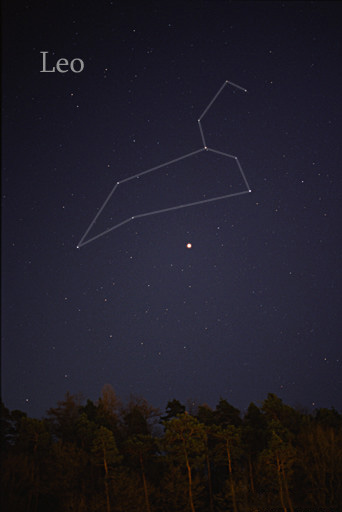
Till Credner - Own work, AlltheSky.com,
CC BY-SA 3.0, wikimedia
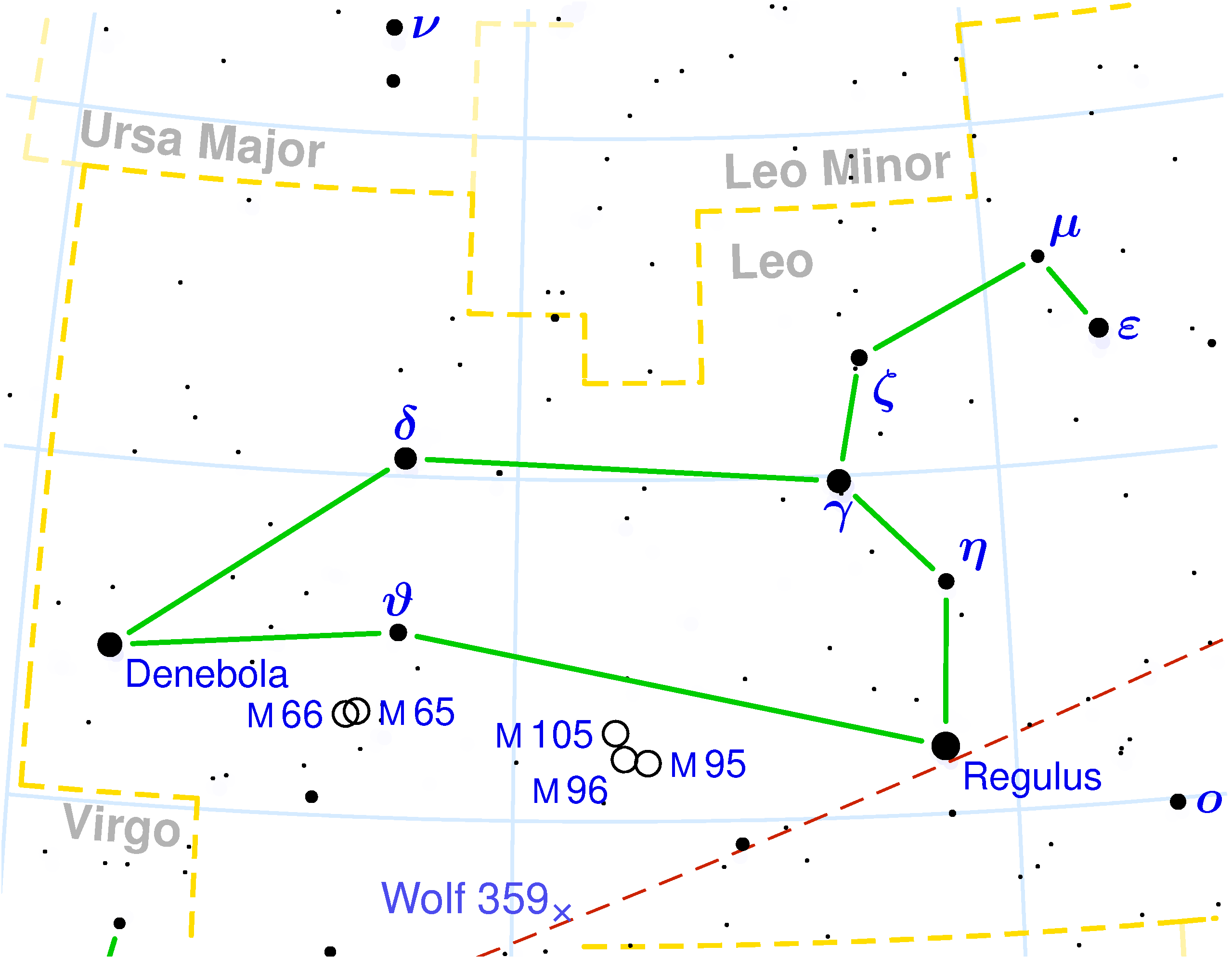
Copyright © 2003 Torsten Bronger.
It was created by Torsten Bronger using the program PP3 on 2003/08/18. At PP3's homepage, you also get the input scripts necessary for re-compiling the map.
The yellow dashed lines are constellation boundaries, the red dashed line is the ecliptic, and the shades of blue show Milky Way areas of different brightness.
The map contains all Messier objects, except for colliding ones. The underlying database contains all stars brighter than 6.5.
All coordinates refer to equinox 2000.0.The map is calculated with the equidistant azimuthal projection (the zenith being in the center of the image).
The north pole is to the top. The (horizontal) lines of equal declination are drawn for 0°, ±10°, ±20° etc. The lines of equal right ascension are drawn for all 24 hours.
Towards the rim there is a very slight magnification (and distortion)., CC BY-SA 3.0, wikimedia
Leo is a prominent constellation in spring. It is easily recognizable due to its many bright stars and distinctive shape. One can make out the crouching lion with its mane and shoulders forming ‘the sickle’, its chest pulsating with the Alpha star, Regulus, its paws poised to pounce and its tail shining brightly thanks to the Beta star Denebola. Leo’s tail used to include the constellation Coma Berenices.
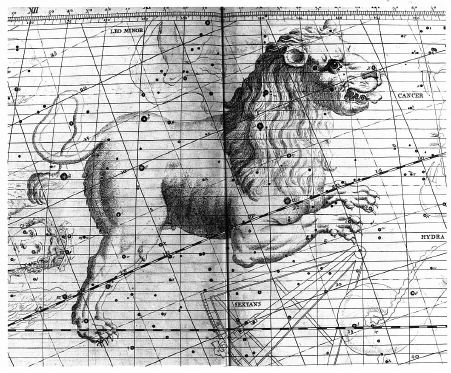
Jacopo Montano - Atlas Coelestis, John Flamsteed,
CC BY-SA 3.0, wikimedia
The story of Leo is tied to the story of Hercules. It refers to the Nemean lion which was killed by Hercules during the first of his twelve labors. Zeus commemorated this labor by placing the Lion in the sky.
The Gamma star Algieba is a magnificent double star which can be seen through a telescope of at least 100x magnification. The two stars rotate around a common center of mass in a period of a little more than 500 years. They are 126 light-years from the Solar System.
The Beta star Denebola is slightly dimmer than Algieba. It is a young star fairly near the Solar System at 36 light-years away and is 14 times brighter than the Sun. Its name, Deneb Alased, comes from Arabic and means ‘the lion’s tail’.
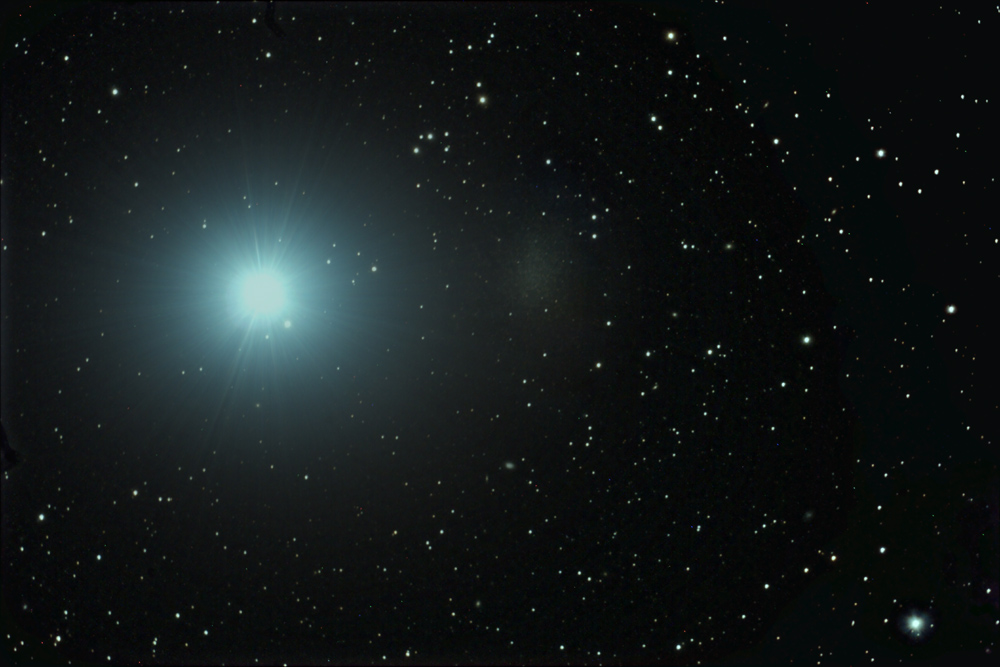
Scott AnttilaAnttler - Own work,
CC BY-SA 3.0, wikimedia
Leo is far from the Milky Way and is rich in extra-galactic objects. The nearest object is called Leo I and is next to the star Regulus. It is a little more than 800,000 light-years away and is thought to be a satellite galaxy of the Milky Way.
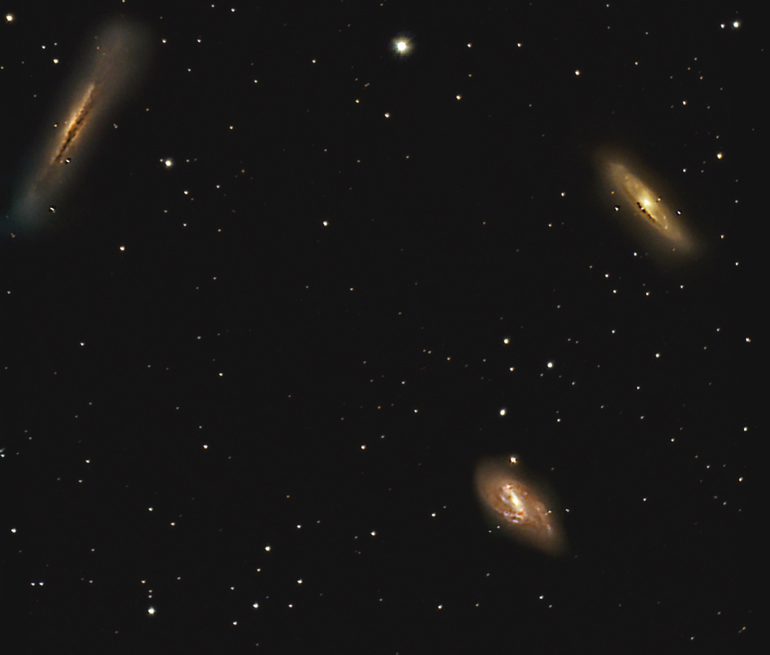
Anttler at en.Wikipedia,
CC BY-SA 3.0, wikimedia
M 65 and M 66 are two galaxies which can be seen through telescopes. They are located in the back paw of Leo and together with NGC 3623 make up the well known Leo Triplet. M 65 is the closest object to us at about 22 million light-years. The other two objects are about 35 million light-years from Earth.
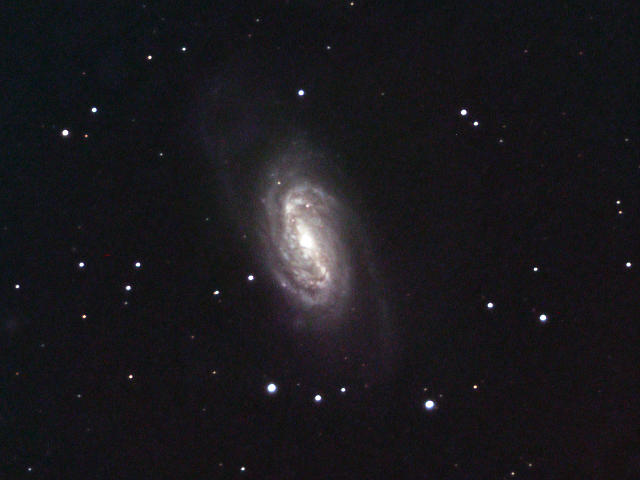
Ole Nielsen - ngc7000.org,
CC BY-SA 2.5, wikimedia
Another spectacular galaxy is NGC 2903, a barred spiral galaxy similar to our Milky Way but smaller. It is a little more than 20 million light-years away.
Southern Hemisphere: Leo can be seen from February to June. At the southern middle latitudes, in April, right after sunset, we can find it high on the northern horizon.